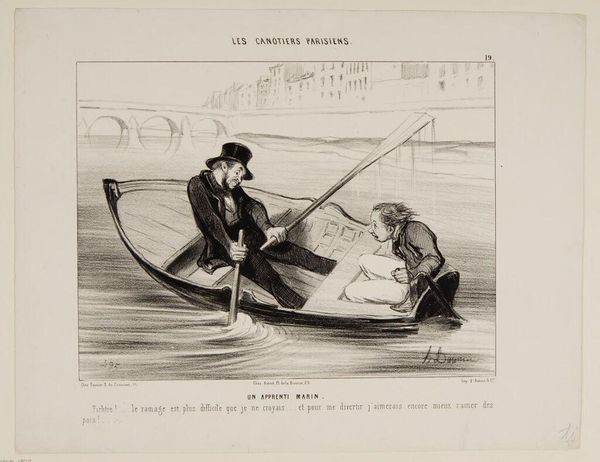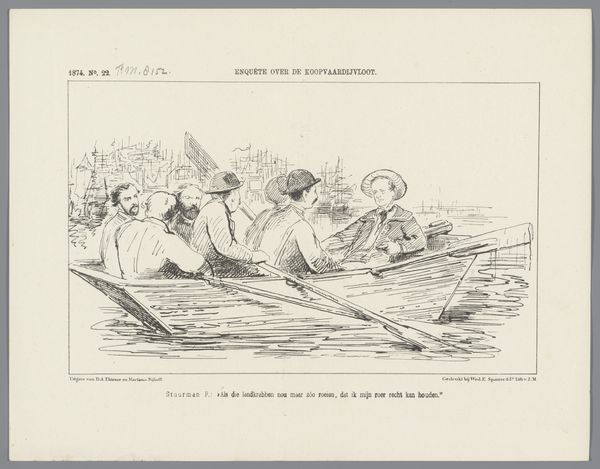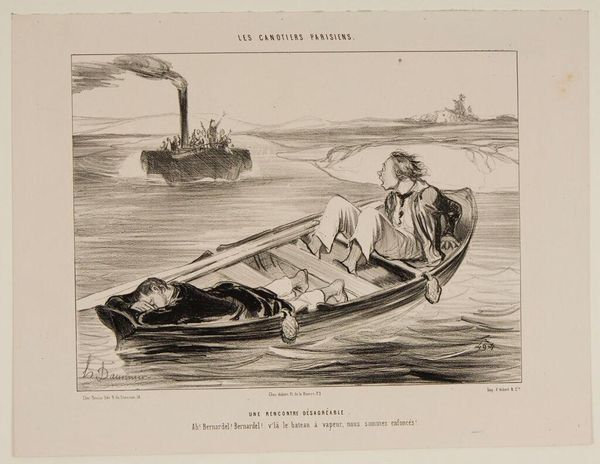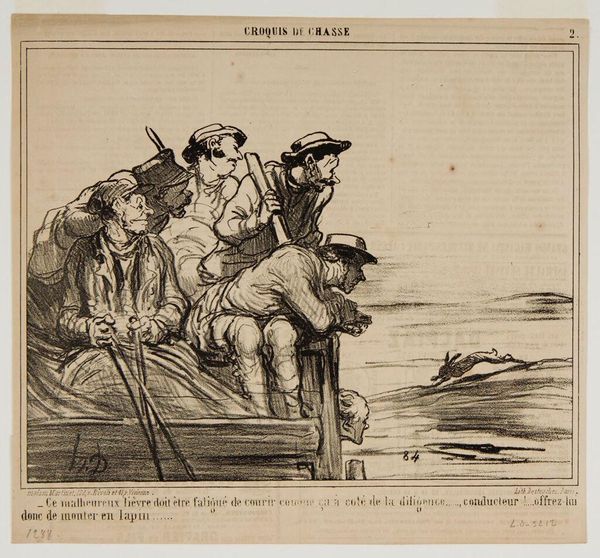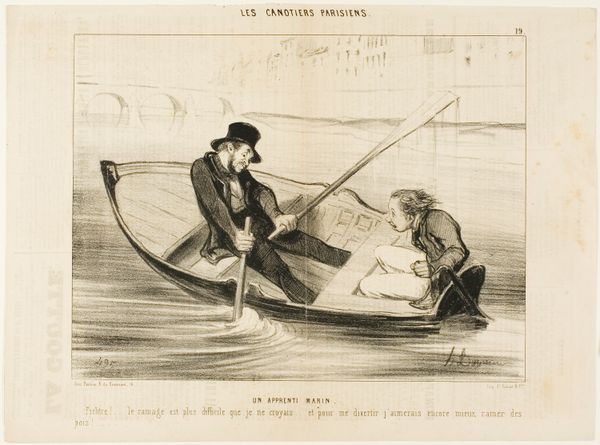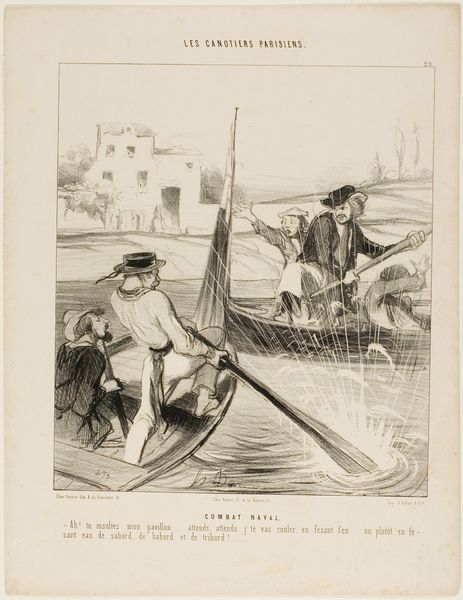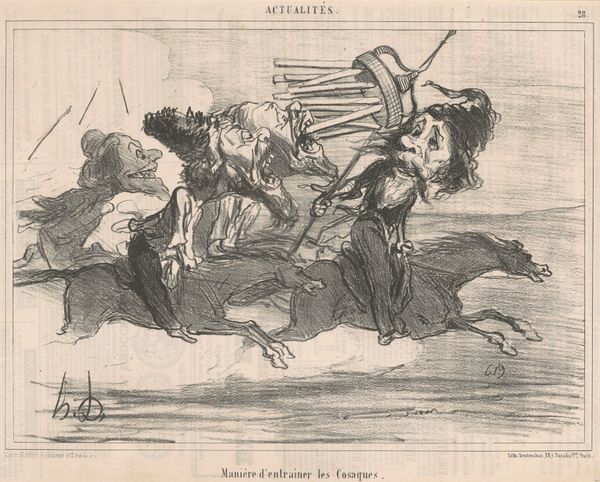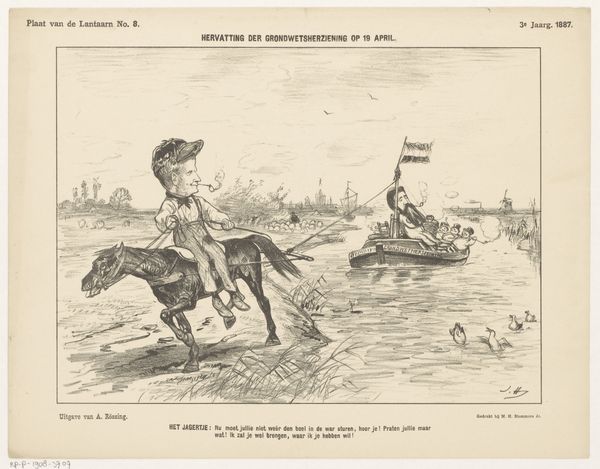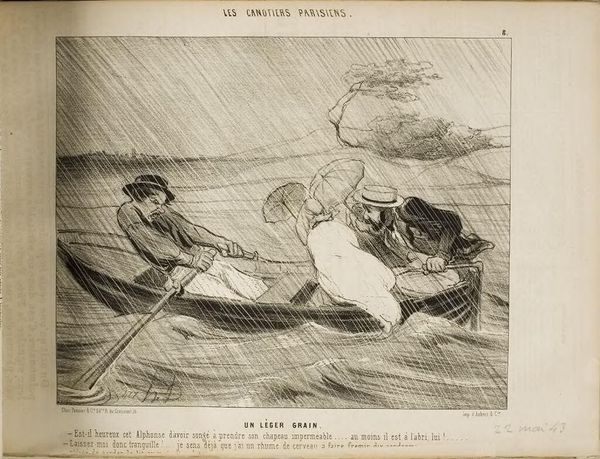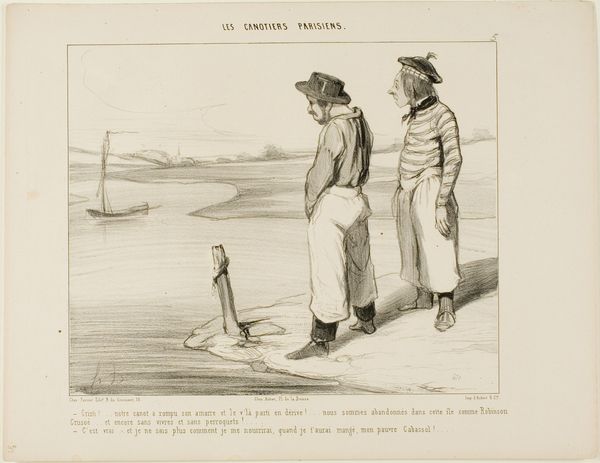
An Encounter in Open Water. “- Hello... down there... Captain.., what's new in Paris? - Nothing new really... still no one goes to the Gaieté or the Ambigu. - Don't you have anything else to tell me? - Oh yes,... I forgot... I hope you like it... shut up!,” plate 11 from Les Canotiers Parisiens 1843
0:00
0:00
drawing, lithograph, print, paper
#
drawing
#
lithograph
# print
#
caricature
#
figuration
#
paper
#
romanticism
#
genre-painting
#
realism
Dimensions: 202 × 268 mm (image); 264 × 361 mm (sheet)
Copyright: Public Domain
Honoré Daumier created this lithograph, “An Encounter in Open Water”, sometime in the mid-19th century. Lithography is a printmaking process that relies on the greasy quality of a crayon or ink applied to a stone or metal plate. Daumier was a master of this technique, using it to create images that were both satirical and socially conscious. He captured the nuances of everyday life, often focusing on the working class. In this print, the artist's hand is evident in the fluid lines and subtle gradations of tone. The lithographic process allowed him to achieve a remarkable level of detail, from the rippling water to the characters' facial expressions. Daumier used this technique, and the ready availability of newsprint, to reach a broad audience. His prints poked fun at the Parisian bourgeoisie, even as they subtly highlighted the labor and class divisions of the time. By embracing this accessible medium, Daumier blurred the boundaries between fine art and popular culture.
Comments
No comments
Be the first to comment and join the conversation on the ultimate creative platform.
